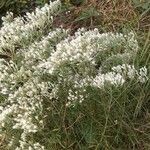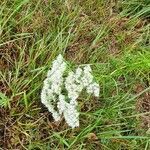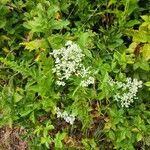Perennials, 50–100+ cm. Stems (from short caudices or rhizomes) single, sparsely branched distally, pubescent throughout. Leaves usually opposite or whorled (distal sometimes alternate, spreading or horizontal); simple, sessile; blades 3-nerved from bases (laterals sometimes weak), lance-linear, lance-oblong, or linear, 20–60 × 2–15 mm (lengths mostly 6–40 times widths), bases cuneate, margins entire, laciniate-serrate, or serrate, apices acute, faces scabrous (at least abaxial). Heads in corymbiform arrays. Phyllaries 8–10 in 2–3 series, elliptic to oblong, 1.5–5 × 1–1.5 mm, apices obtuse to acute (not mucronate), abaxial faces pubescent throughout (more densely distally). Florets 5; corollas 3–3.5 mm. Cypselae 2–3 mm; pappi of 20–30 bristles 3.5–4 mm.



